Electronics: Diode
To the category of electronic devices we relate all devices that use electricity and whose primary purpose is not just to heat or to do mechanical work.
Radio, television, computers, all kinds of non-mechanical switches and regulators, phones, hardware that runs Internet and many others devices belong to this category of electronic devices.
Obviously, we cannot talk about how all these devices work. Instead, we will spend some time to understand the basic components that are used in these devices.
Diodes are one of the simplest electronic components that are present in practically all electronic devices.
The main purpose of a diode is to let the electric current only in one direction. This process of allowing electric current to go only in one direction is called rectifying the current.
The origin of diodes lies in an observations made by scientists and engineers (Fleming, Edison and others) at the end of 19th century. Two wires that did not touch each other were placed inside a vacuum tube, one connected to a positive pole of a battery (anode) and another connected to a negative one (cathode). At normal temperature there was no electric current between them, because they did not touch each other. But, if the negative wire was heated, some electric current between these wires was observed, while heating the positive wire did not cause any current in the circuit.
The explanation of this phenomenon is simple. Heating increases the activity of elementary particles inside a negatively charged metal of a wire that has an excess of electrons. With this increased activity certain electrons escape from the surface of the metal and form some kind of electron cloud. This is called thermionic emission.
In the presence of a positively charged wire some electrons from a cloud are attracted to a positive wire, thus forming a current. New electrons from a negative poll of a battery replace the escaped electrons, maintaining a fresh supply of new electrons, which enables a steady current.
Obviously, if a positive wire with its deficiency of electrons is heated, even if some electrons do escape because of high temperature, they will be repelled by a negative wire and attracted back to a positive one. No current would be formed.
Below is a schematic representation of a vacuum tube diode with ampere meter in a circuit showing the existence of electric current.
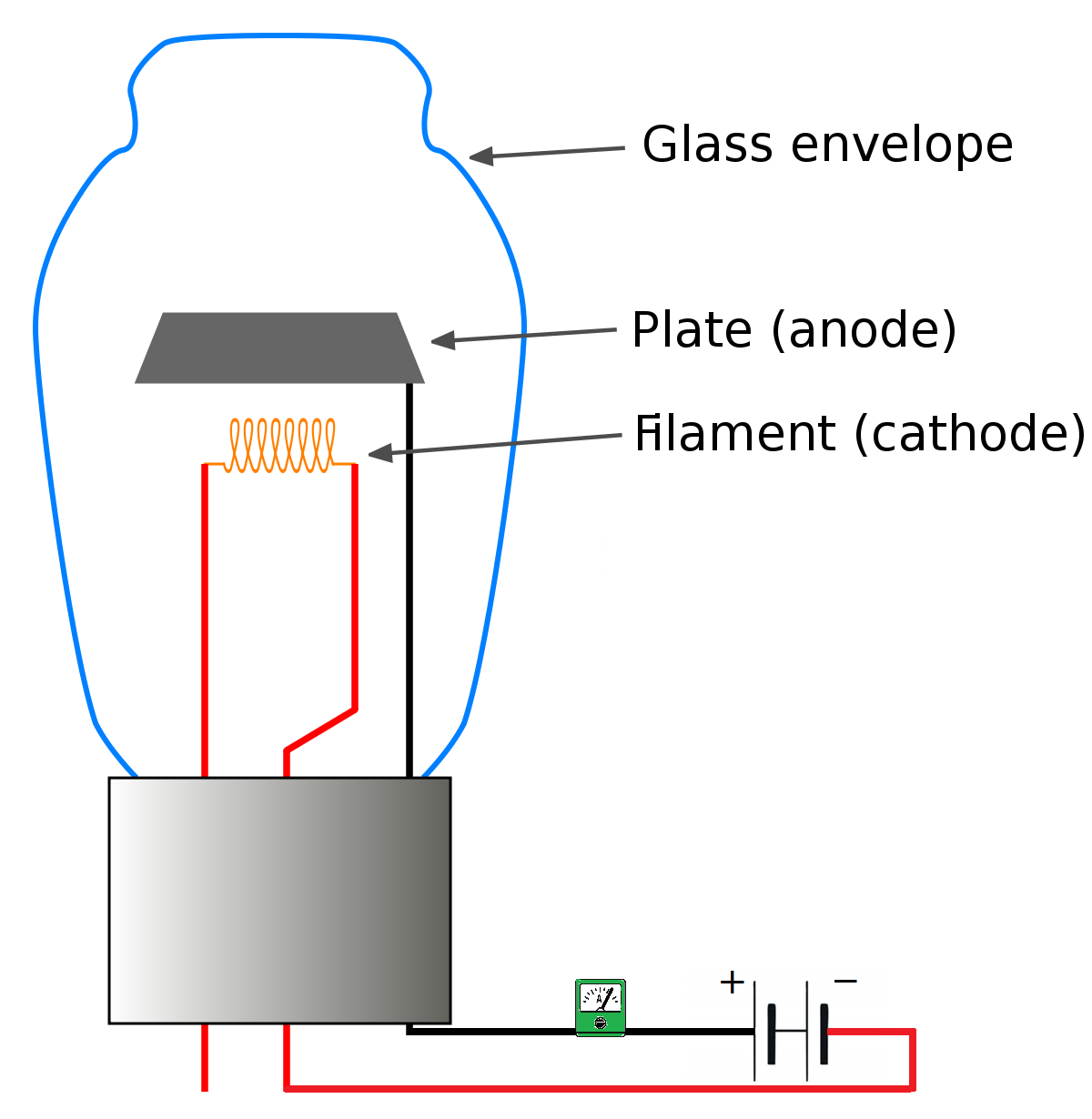
The symbol for a diode in electronic schemas is
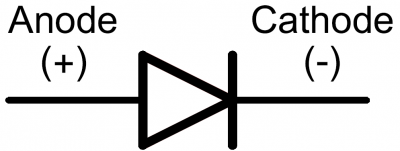
The primary usage of diodes is to rectify the alternating current, where they allow the current to go only in one direction, thus converting AC to DC.
They are also used in signal isolation, filtering and mixing.
Vacuum tube diodes are used now only in high capacity rectifiers with semiconductors based diodes used in all the electronic devices we usually deal with.
Let's analyze the process of rectifying AC using diodes.
As we know, the current in a regular AC circuit is sinusoidal, changing the direction and the value.
If a diode is included into a circuit in sequence, the current in one direction will go through, while it will be prohibited to go in the opposite direction.
This causes the alternating current to change from a regular sinusoidal wave-like behavior into irregular direct current.
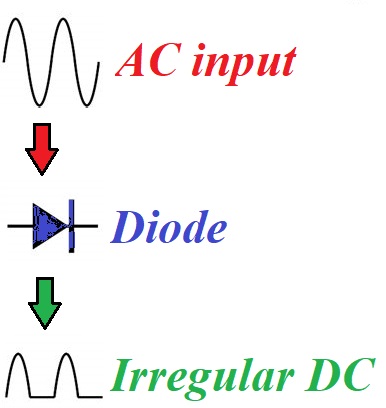
The irregularity of the current in a circuit can be improved by using a bridge rectifier built from 4 diodes as follows
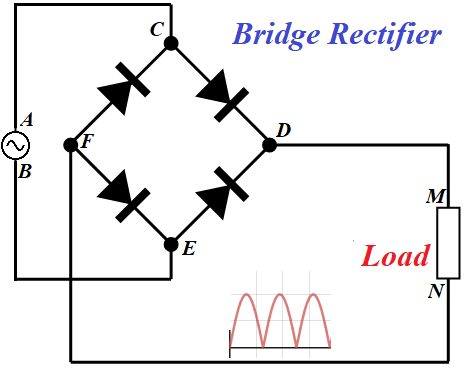
If the AC generator produces positive charge at point A and negative at point B, the flow of electrons is in the direction BEFNMDCA. The electric current is defined as going against the flow of electrons in the opposite direction ACDMNFEB.
If the AC generator produces positive charge at point B and negative at point A, the flow of electrons is in the direction ACFNMDEB. The electric current is defined as going against the flow of electrons in the opposite direction BEDMNFCA.
As you see, the direction of a current in both cases is from point M to point N, regardless of polarity of a generator contacts.
The AC current rectified by diodes that form a bridge is better than rectified by a single diode, but still is quite irregular, comparing with DC current from a battery.
Additional improvements can be achieved by splitting a current into two separate lines and putting a capacitor on one of them to change the phase of the oscillations and then combining signals together.
Here is how the combination works.
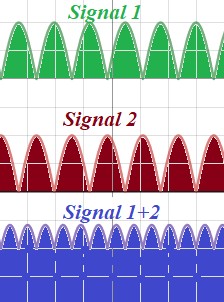
The combined
In general, by combining currents, shifted by phase relative to each other, helps improving the stability of the flow of electrons. Real life rectifiers are build on this principle.
Vacuum tube diodes have been largely replaced by semiconductors, but the principle of their work is very similar.


No comments:
Post a Comment